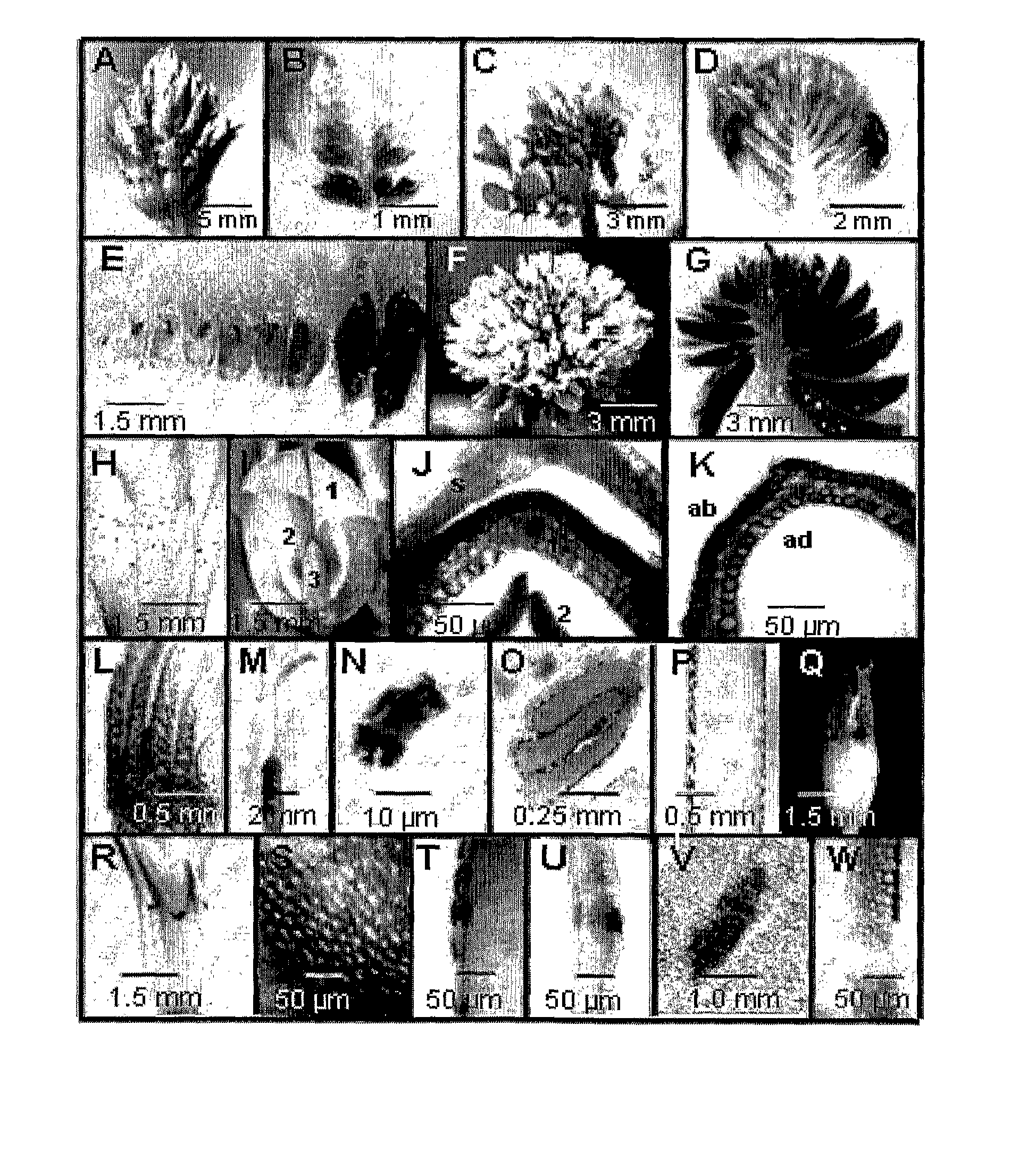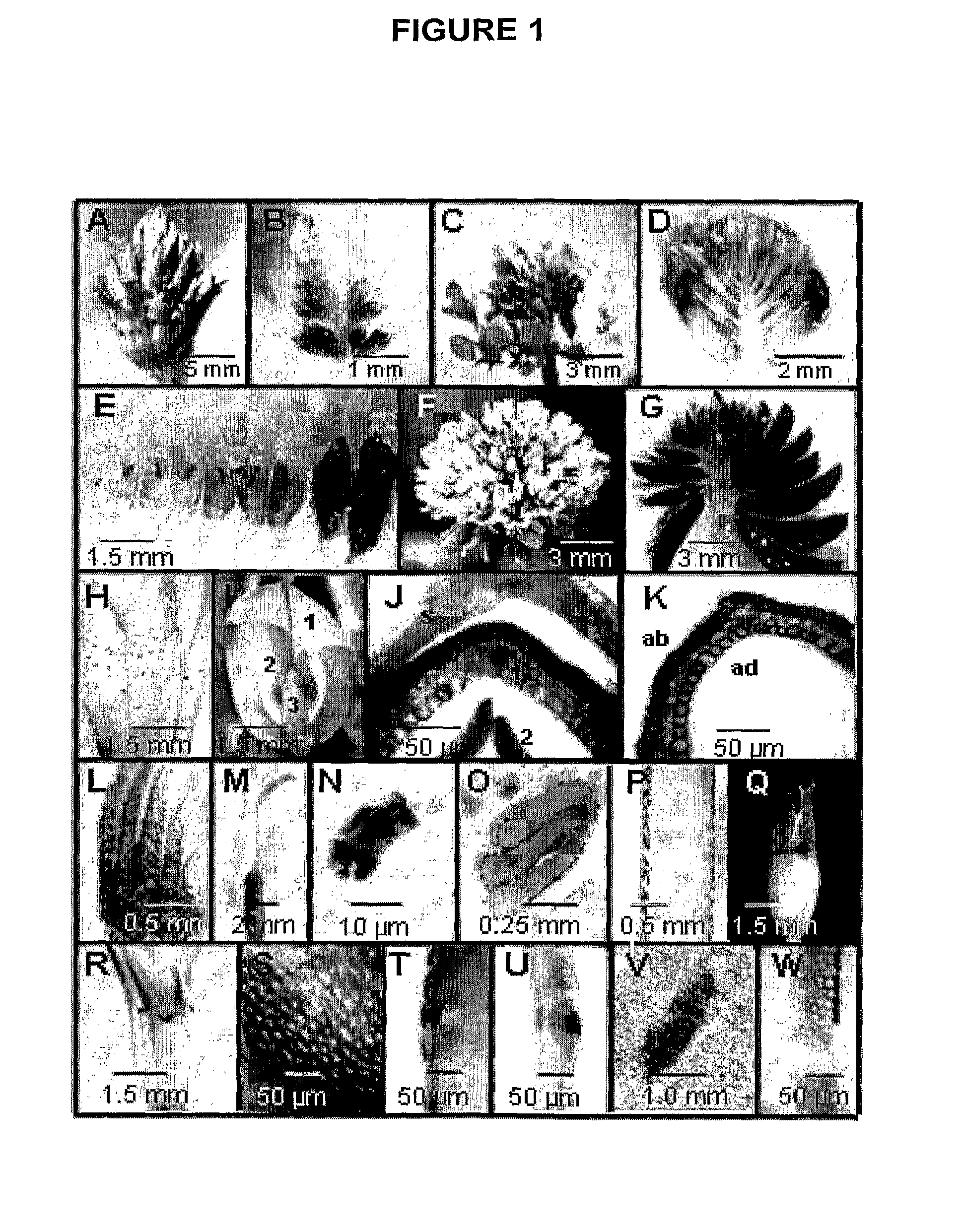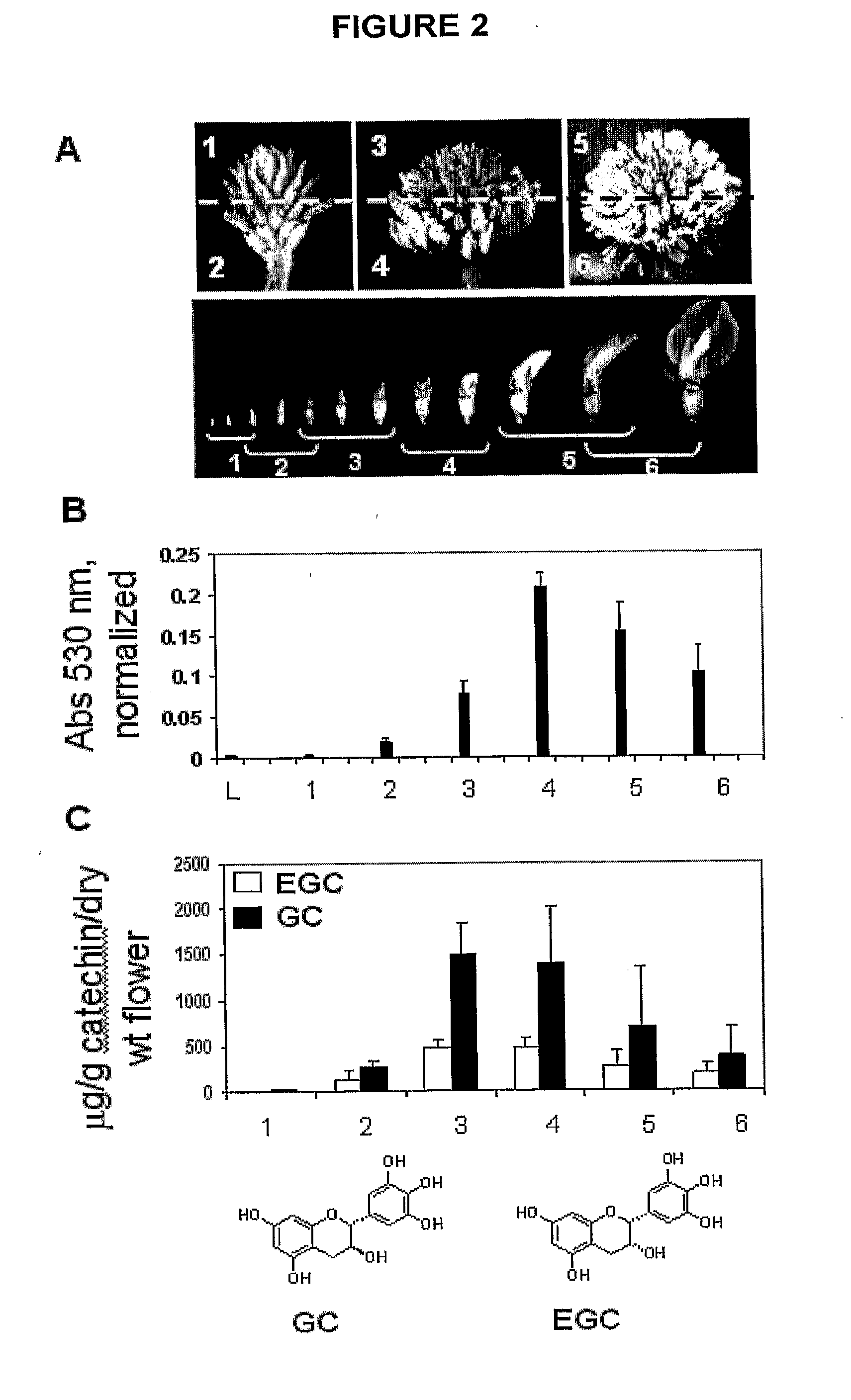Manipulation of flavonoid biosynthetic pathway
a biosynthetic pathway and flavonoid technology, applied in biochemistry apparatus and processes, plant cells, library screening, etc., can solve the problems of inconvenient loss-of-function approaches, limited transgenic approaches, and poor understanding of pa biosynthesis steps, so as to improve the nutrition of grazing animals and increase pa in leaf blades
- Summary
- Abstract
- Description
- Claims
- Application Information
AI Technical Summary
Benefits of technology
Problems solved by technology
Method used
Image
Examples
example 1
Methods
[0159]Plant Growth Conditions
[0160]Wild type and transgenic white clover lines were vernalised in a controlled growth room for 6 weeks at 5° C. with an 8 h photoperiod and a light intensity of 41+ / −5 μmol-m−1-s−1 at canopy height. Flowering was then induced in a controlled growth cabinet (Enconair) by growing plants for 4 weeks at 22° C. with a 16 hour photoperiod and a light intensity of 240+ / −30 μmol-m−1-s−1 at canopy height.
[0161]Generation of Transgenic Plants
[0162]Transgenic white clover plants (Trifolium repens L. cv Mink) were generated by Agrobacterium-mediated transformation using cotyledonary explants and selection with 50 mg / L kanamycin sulfate as previously described (Ding et al., 2003). DNA was extracted from leaf tissue of putative transgenic lines using the Wizard DNA purification kit (Promega) and screened by real-time PCR for the presence of the npt2 selectable marker gene using the primers 5′-GGCTATGACTGGGCACAACA-3′ and 5′-ACCGGACAGGTCGGTCTTG-3′. PCR mixture...
example 2
[0180]Proanthocyanidins and Anthocyanins are Co-Localized in Floral Epidermal Cells
[0181]PAs and their monomers were histochemically stained in white clover organs and tissues using DMACA (FIG. 1). Floral organs stained strongly indicating that a high level of PA and 2,3-flavan-3-ol monomers were present. Accumulation of PAs in inflorescences at immature, partially (50%) open and mature stages of development is shown in FIG. 1(A-G). The accumulation of PAs appeared to be developmentally regulated within all three developmental stages as indicated by intense staining of the oldest florets located at the base of each inflorescence (FIG. 1B, D,E,G). White clover flowers have a calyx that consists of 5 fused sepals in which PAs or their monomers were detected only in multicellular trichomes (FIG. 1H). The white or pale pink asymmetrical corolla contains 5 petals: a single large standard petal and two lateral wing petals, which enclose two interior keel petals (FIG. 1I). At early stages ...
example 3
[0183]Flavonoid Levels and Composition Change During Floral Development in White Clover
[0184]We divided the inflorescences transversely at three selected developmental stages, namely, immature inflorescences, 50% open and mature inflorescences, for quantitative analyses of flavonols, PA, flavan-3-ols and ANT during flower development. This allowed the less developed flowers (upper part of inflorescence) and more developed flowers (lower part of inflorescence) within each inflorescence to be analysed separately (FIG. 2A). As a result, flower development was represented by six stages, the youngest being the upper part of immature inflorescences (stage 1) and the most developed being the lower part of mature inflorescences (stage 6) (FIG. 2A).
[0185]PAs were extracted in butanol-HCl, bound to PVPP and heated to release colored anthocyanidins as degradation products of PAs. This method showed that a very low level of PAs accumulated in leaves, reflecting their presence only in trichomes ...
PUM
| Property | Measurement | Unit |
|---|---|---|
| Volume | aaaaa | aaaaa |
| Volume | aaaaa | aaaaa |
| Fraction | aaaaa | aaaaa |
Abstract
Description
Claims
Application Information
 Login to View More
Login to View More - R&D
- Intellectual Property
- Life Sciences
- Materials
- Tech Scout
- Unparalleled Data Quality
- Higher Quality Content
- 60% Fewer Hallucinations
Browse by: Latest US Patents, China's latest patents, Technical Efficacy Thesaurus, Application Domain, Technology Topic, Popular Technical Reports.
© 2025 PatSnap. All rights reserved.Legal|Privacy policy|Modern Slavery Act Transparency Statement|Sitemap|About US| Contact US: help@patsnap.com



